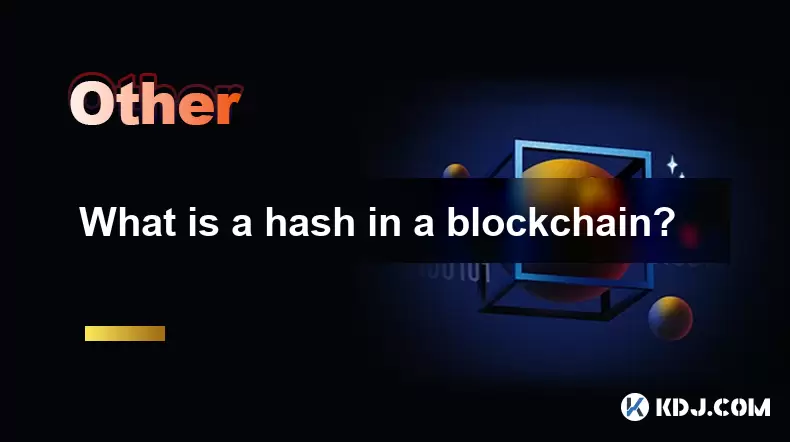-
 Bitcoin
Bitcoin $113900
-1.39% -
 Ethereum
Ethereum $3517
-4.15% -
 XRP
XRP $3.009
1.59% -
 Tether USDt
Tether USDt $0.9997
-0.04% -
 BNB
BNB $766.8
-1.41% -
 Solana
Solana $164.6
-2.38% -
 USDC
USDC $0.9998
-0.02% -
 TRON
TRON $0.3277
0.65% -
 Dogecoin
Dogecoin $0.2023
-1.67% -
 Cardano
Cardano $0.7246
0.05% -
 Hyperliquid
Hyperliquid $38.27
-4.77% -
 Sui
Sui $3.528
-0.52% -
 Stellar
Stellar $0.3890
-0.73% -
 Chainlink
Chainlink $16.16
-2.69% -
 Bitcoin Cash
Bitcoin Cash $539.9
-4.38% -
 Hedera
Hedera $0.2425
-2.00% -
 Avalanche
Avalanche $21.71
-0.97% -
 Toncoin
Toncoin $3.662
5.73% -
 Ethena USDe
Ethena USDe $1.000
-0.02% -
 UNUS SED LEO
UNUS SED LEO $8.964
0.35% -
 Litecoin
Litecoin $107.7
2.33% -
 Shiba Inu
Shiba Inu $0.00001223
-0.40% -
 Polkadot
Polkadot $3.617
-0.97% -
 Uniswap
Uniswap $9.052
-2.49% -
 Monero
Monero $295.1
-3.79% -
 Dai
Dai $0.9999
0.00% -
 Bitget Token
Bitget Token $4.315
-1.85% -
 Pepe
Pepe $0.00001060
0.11% -
 Cronos
Cronos $0.1342
-2.72% -
 Aave
Aave $256.0
-0.87%
How do blockchain nodes interact across chains? How does it achieve interoperability?
Blockchain nodes interact across chains using protocols like atomic swaps and cross-chain bridges, enabling seamless asset and data transfer between different blockchains.
May 17, 2025 at 06:49 am

The world of cryptocurrencies and blockchain technology has seen significant advancements, particularly in the area of interoperability between different blockchains. Understanding how blockchain nodes interact across chains and how this interaction achieves interoperability is crucial for anyone involved in the crypto space. This article delves into the mechanisms, technologies, and protocols that facilitate cross-chain interactions.
The Basics of Blockchain Nodes
Before diving into cross-chain interactions, it's important to understand what blockchain nodes are. A blockchain node is a computer that participates in a blockchain network by maintaining a copy of the entire blockchain and validating transactions. These nodes can be full nodes, which store the entire history of the blockchain, or light nodes, which store only the most recent data.
Nodes communicate with each other to ensure the integrity and security of the blockchain. When a transaction occurs, it is broadcast to the network, and nodes verify it before adding it to the blockchain. This process is fundamental to the operation of any single blockchain.
The Need for Interoperability
As the number of blockchains grows, so does the need for them to communicate and share data. Interoperability refers to the ability of different blockchain networks to interact and exchange information seamlessly. This is crucial for the development of decentralized applications (dApps) that can operate across multiple blockchains, enhancing their functionality and reach.
Without interoperability, each blockchain operates in isolation, limiting the potential of decentralized systems. Interoperability allows for the transfer of assets, data, and value between different blockchains, creating a more interconnected and efficient ecosystem.
Cross-Chain Communication Protocols
To achieve interoperability, various protocols and technologies have been developed. These protocols enable blockchain nodes to interact across chains, facilitating the exchange of information and assets. Some of the most prominent protocols include:
Atomic Swaps: Atomic swaps allow for the direct exchange of cryptocurrencies between different blockchains without the need for intermediaries. This is achieved through smart contracts that ensure the swap occurs only if both parties fulfill their obligations. For example, if Alice wants to swap her Bitcoin for Bob's Ethereum, the smart contracts on both blockchains will execute the swap simultaneously, ensuring that neither party can back out once the process has started.
Sidechains and Pegged Sidechains: Sidechains are separate blockchains that are linked to a main blockchain, allowing assets to be transferred between them. Pegged sidechains maintain a fixed exchange rate with the main chain, ensuring that the value of assets remains consistent. For instance, the Liquid Network is a sidechain of Bitcoin that enables faster and more private transactions while still being secured by the Bitcoin network.
Cross-Chain Bridges: Cross-chain bridges are protocols that connect two or more blockchains, allowing for the transfer of assets and data. These bridges can be centralized or decentralized, with decentralized bridges being more secure and less prone to single points of failure. An example of a cross-chain bridge is the Cosmos Network's Inter-Blockchain Communication (IBC) protocol, which enables different blockchains to communicate and transfer assets securely.
Interoperability Platforms: Platforms like Polkadot and Cosmos are designed to facilitate interoperability between multiple blockchains. These platforms use a hub-and-spoke model, where a central hub connects to various blockchains, allowing them to communicate and share data. For example, Polkadot's relay chain acts as the hub, connecting to parachains (parallel blockchains) that can interact with each other through the relay chain.
How Nodes Interact Across Chains
The interaction between nodes across different blockchains is facilitated by the protocols mentioned above. Here's a detailed look at how this interaction occurs:
Node Communication: When a node on one blockchain needs to interact with a node on another blockchain, it uses the appropriate cross-chain protocol. For example, if a node on the Ethereum blockchain wants to send data to a node on the Bitcoin blockchain, it might use an atomic swap or a cross-chain bridge.
Data Transmission: The data or asset to be transferred is packaged and sent through the chosen protocol. This data is encrypted and secured to ensure that it reaches the destination node without being tampered with.
Verification and Validation: Once the data reaches the destination node, it is verified and validated according to the rules of the receiving blockchain. This ensures that the data is accurate and that the transaction is legitimate.
Execution: After validation, the transaction or data transfer is executed on the receiving blockchain. This might involve updating the blockchain's state, transferring assets, or executing smart contracts.
Challenges and Solutions
While cross-chain interoperability offers numerous benefits, it also presents several challenges. These include security risks, scalability issues, and the complexity of integrating different blockchain technologies. Here are some solutions to these challenges:
Security Enhancements: To mitigate security risks, developers are focusing on creating more robust and decentralized cross-chain protocols. For example, decentralized bridges reduce the risk of single points of failure, making the system more secure.
Scalability Solutions: Scalability is a major concern for blockchain networks, and cross-chain interoperability can exacerbate this issue. Solutions like sharding, layer-2 scaling, and off-chain transactions are being explored to improve the scalability of interoperable systems.
Standardization Efforts: To address the complexity of integrating different blockchains, there are ongoing efforts to standardize cross-chain protocols. Organizations like the InterWork Alliance are working on creating common standards and frameworks for interoperability.
Real-World Applications
Cross-chain interoperability has numerous real-world applications, enhancing the functionality and utility of blockchain technology. Some examples include:
Decentralized Finance (DeFi): DeFi platforms can leverage cross-chain interoperability to offer more diverse and flexible financial services. For example, a DeFi application might allow users to borrow assets from one blockchain and use them as collateral on another.
Supply Chain Management: Interoperability can improve supply chain management by allowing different blockchains to share data and track goods across multiple networks. This can enhance transparency and efficiency in global supply chains.
Gaming and NFTs: In the gaming industry, cross-chain interoperability can enable the seamless transfer of non-fungible tokens (NFTs) between different gaming platforms, enhancing the gaming experience and increasing the value of digital assets.
Frequently Asked Questions
Q: What are the main benefits of cross-chain interoperability for users?
A: Cross-chain interoperability offers several benefits for users, including increased flexibility, enhanced security, and access to a wider range of decentralized applications. Users can transfer assets and data between different blockchains, enabling them to take advantage of the unique features of each network.
Q: How do developers ensure the security of cross-chain transactions?
A: Developers ensure the security of cross-chain transactions through various methods, including the use of decentralized protocols, encryption, and rigorous testing. Decentralized bridges and atomic swaps, for example, reduce the risk of single points of failure and ensure that transactions are executed securely.
Q: Can cross-chain interoperability be achieved without a centralized intermediary?
A: Yes, cross-chain interoperability can be achieved without a centralized intermediary through decentralized protocols like atomic swaps and decentralized bridges. These protocols allow for direct peer-to-peer interactions between nodes on different blockchains, ensuring that the system remains decentralized and secure.
Q: What role do smart contracts play in cross-chain interoperability?
A: Smart contracts play a crucial role in cross-chain interoperability by facilitating the execution of cross-chain transactions and ensuring that the terms of these transactions are met. For example, in an atomic swap, smart contracts on both blockchains ensure that the swap occurs only if both parties fulfill their obligations, providing a secure and trustless mechanism for cross-chain interactions.
Disclaimer:info@kdj.com
The information provided is not trading advice. kdj.com does not assume any responsibility for any investments made based on the information provided in this article. Cryptocurrencies are highly volatile and it is highly recommended that you invest with caution after thorough research!
If you believe that the content used on this website infringes your copyright, please contact us immediately (info@kdj.com) and we will delete it promptly.
- Solana, Axiom Exchange, and Revenue: Navigating the Future of DeFi
- 2025-08-02 12:50:12
- Cardano (ADA) and Altcoin Gains: Navigating the Crypto Landscape
- 2025-08-02 12:55:11
- Bitcoin's Bearish Momentum: Fakeout or the Real Deal?
- 2025-08-02 12:30:12
- Ethereum's Rocky Climb: Analysts Eye New ATH Despite Recent Dip
- 2025-08-02 10:30:11
- Ethereum Price, ETF Inflows, and ETH Tokens: What's Driving the Market?
- 2025-08-02 10:50:12
- Ethereum, ADA, and Price Support: What's Next for These Crypto Titans?
- 2025-08-02 10:50:12
Related knowledge

What is the double-spending problem and how does blockchain prevent it?
Aug 02,2025 at 01:07pm
Understanding the Double-Spending ProblemThe double-spending problem is a fundamental challenge in digital currency systems where the same digital tok...

What is the difference between a blockchain and a database?
Aug 01,2025 at 09:36pm
Understanding the Core Structure of a BlockchainA blockchain is a decentralized digital ledger that records data in a series of immutable blocks linke...

What is a hash in a blockchain?
Aug 02,2025 at 05:28am
Understanding the Concept of Hash in BlockchainA hash in the context of blockchain technology refers to a unique digital fingerprint generated by a cr...

What is a hash in a blockchain?
Aug 02,2025 at 04:43am
Understanding the Concept of Hash in BlockchainA hash in the context of blockchain technology refers to a unique digital fingerprint generated by a cr...

Who created blockchain?
Aug 02,2025 at 05:15am
What Is Blockchain and Why Does Its Origin Matter?Understanding who created blockchain begins with recognizing what blockchain actually is. Blockchain...

How to start a business using blockchain?
Jul 28,2025 at 12:36am
Understanding the Basics of Blockchain TechnologyBefore diving into the process of starting a business using blockchain, it's crucial to understand wh...

What is the double-spending problem and how does blockchain prevent it?
Aug 02,2025 at 01:07pm
Understanding the Double-Spending ProblemThe double-spending problem is a fundamental challenge in digital currency systems where the same digital tok...

What is the difference between a blockchain and a database?
Aug 01,2025 at 09:36pm
Understanding the Core Structure of a BlockchainA blockchain is a decentralized digital ledger that records data in a series of immutable blocks linke...

What is a hash in a blockchain?
Aug 02,2025 at 05:28am
Understanding the Concept of Hash in BlockchainA hash in the context of blockchain technology refers to a unique digital fingerprint generated by a cr...

What is a hash in a blockchain?
Aug 02,2025 at 04:43am
Understanding the Concept of Hash in BlockchainA hash in the context of blockchain technology refers to a unique digital fingerprint generated by a cr...

Who created blockchain?
Aug 02,2025 at 05:15am
What Is Blockchain and Why Does Its Origin Matter?Understanding who created blockchain begins with recognizing what blockchain actually is. Blockchain...

How to start a business using blockchain?
Jul 28,2025 at 12:36am
Understanding the Basics of Blockchain TechnologyBefore diving into the process of starting a business using blockchain, it's crucial to understand wh...
See all articles

























































































